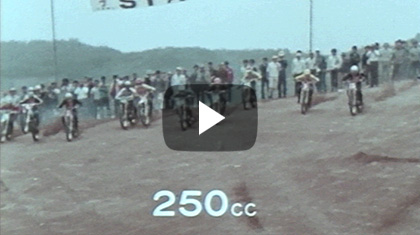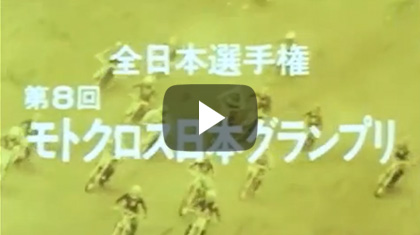The DT-1 was Yamaha Motor’s first off-road model and was unveiled for the first time in October 1967 at the dealer meeting of Yamaha International Corporation (YIC), Yamaha’s sales company in the United States at the time. This slim and handsome model pioneered a new motorcycle category called “trail” bikes, and would spark an unprecedented boom in off-road riding in the U.S. and Japan.
The story behind the model and the boom actually began on the West Coast of the U.S. in the 1960s. It was a time when a growing number of riders were discovering the fun and excitement of off-road riding in the West’s vast expanse of wildlands. One of their favorite riding areas was Saddleback in the Santa Ana Mountains. Its beautiful ridgeline can be seen in the distance from Los Angeles on a clear day, and the name comes from the resemblance of the ridgeline to a horse saddle. This mountain area was where young off-road enthusiasts loved to ride. Around the same time, other young off-road riders in Colorado had started riding trails in the foothills of the Rocky Mountains, the range with the highest average elevation in the U.S.
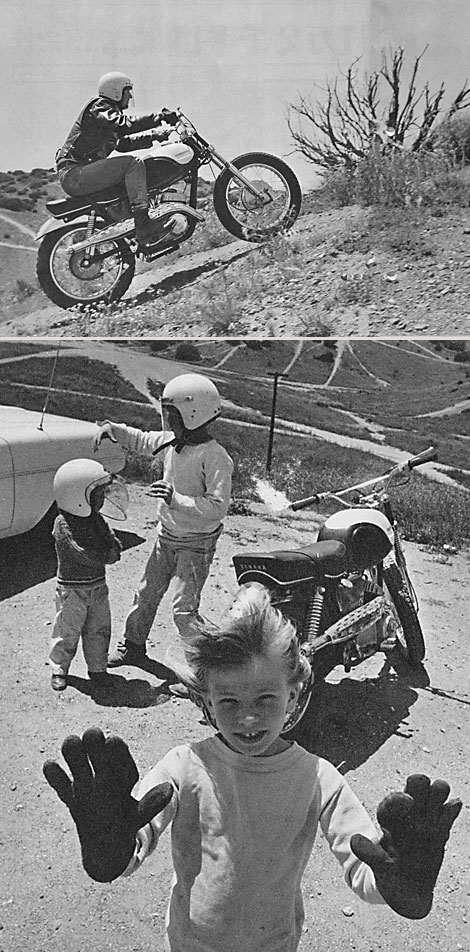 A Yamaha YDS3C in the United States back in 1967
A Yamaha YDS3C in the United States back in 1967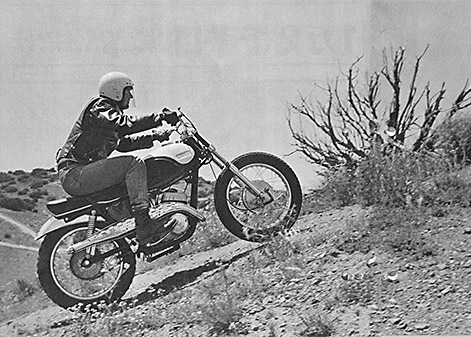 A Yamaha YDS3C in the United States back in 1967
A Yamaha YDS3C in the United States back in 1967It was around then that Yamaha was selling a number of models in the U.S. designed with this kind of off-road riding in mind under the “Trailmaster” name. These were based on existing road-going machines of the time and equipped with features like engine guards, wide handlebars and mid-mount mufflers, but they weren’t full-fledged “trail” models.
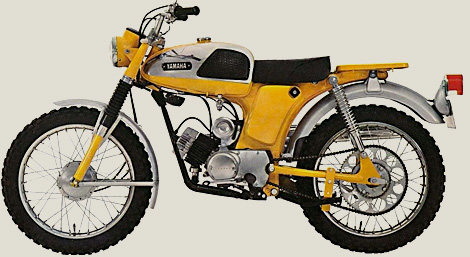 Yamaha Trailmaster 100 (YL-2C) released in 1967
Yamaha Trailmaster 100 (YL-2C) released in 1967Yamaha’s U.S. sales company, YIC, believed there was a future in a trail model that could be ridden on public roads as well as off-road, and they made that interest known to Yamaha headquarters in Japan through the Japanese employees stationed at YIC. They ardently communicated to the R&D department in Japan the need to develop this completely new kind of model: “It’s true that the current economic conditions in the U.S. have caused a decline in motorcycle demand, but the trail category will surely grow in the future.” In the spring of 1966, YIC made a presentation at Yamaha Motor headquarters outlining the need for such a model. After sending a sample model to Japan, the design and engineering work for what would become the DT-1 began in October 1966. Back then in Japan, there wasn’t even a clear idea of what the trail category entailed, so Yamaha Motor sent a group of their engineers and product planning staff, together with designers from GK Dynamics, to the U.S. to observe the actual state of the off-road riding scene and listen to the requests of the users. They also went riding off-road to experience it firsthand and began getting ideas for the kind of machine they should build.
The requests they got from the American side for the new model were detailed and would be very difficult to achieve. It had to be powered by a 250cc engine, have elements of motocross as well as trials riding performance, and be ridable on public roads as well as mountain trails. The requests also extended to tire size, tire pattern, suspension types and stroke length, wheelbase, seat height, minimum ground clearance and more. It was difficult for the American staff and the Japanese development team to find a shared image of the machine they were trying to build, however, so it was only natural that the development progress was touch and go. Still, the engineers gradually grew determined to clear the hurdles that lay before them in this new challenge. They eventually decided on a development policy centering on the following three points:
1) Get machine weight under 100 kg 2) Make the chassis as slim as possible for riding on narrow trails 3) Maximize engine torque
“We were excited to be venturing into a completely unknown realm,” recalled one of the engineers. The development team was inspired by the fact that they would be taking on the challenge to enter a world of riding that was completely new and build a model that the world had never seen before.
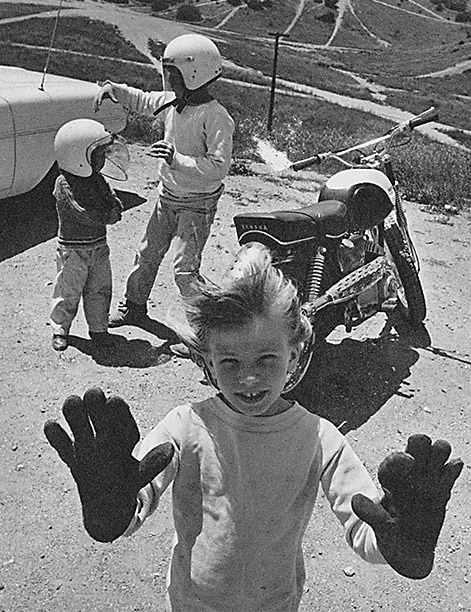 A Yamaha YDS3C in the United States back in 1967
A Yamaha YDS3C in the United States back in 1967After tests in the U.S. and other preparations, the DT-1 was released a year later in the spring of 1968. Part of the reason that it took just 15 months from start to finish was the existence of the “YX26,” Yamaha’s first single-cylinder factory motocrosser.
The development of the YX26 factory machine began in November 1965. That was only a few months before YIC gave its presentation at Yamaha in Japan urging the development of the DT-1. Toshinori Suzuki was one of the men involved in the development of the YX26, and he reflected on what happened back then:“In our race activities from 1963 to 1965, Yamaha was concentrating on the development of 2-cylinder machines. A rider would use the same bike but alter the specs to suit road races or motocross. These bikes had an advantage on motocross courses where higher speeds could be reached, but they were at a disadvantage when rain fell or when on twisty courses with more turns. At the time, Suzuki and Kawasaki were competing with single-cylinder machines. That made us engineers at Yamaha anxious to develop our own single-cylinder bike.”

 The YX26 factory motocrosser
The YX26 factory motocrosserThere was a clear reason behind Yamaha’s preference for 2-stroke 2-cylinder engines until that time: Yamaha had won Road Racing World Championship titles with that engine format. Yamaha started competing in the World Championship in 1961, and won its first race with the 2-stroke 2-cylinder RD56 at the Belgium GP in 1963. The following season, Yamaha won the Constructor and Rider titles in the 250cc class with that machine. After reaching the top in the sport of road racing, the next challenge Yamaha set its sights on was motocross, and the company initially bet on the potential of the 2-stroke 2-cylinder engine. But Yamaha eventually changed course, and began development of the single-cylinder YX26 in November 1965. Then, just a few months later, the project to develop the DT-1 was launched.
Both the YX26 and the DT-1 were 250cc machines and there was considerable overlap in their development. Thus, the YX26 naturally became the “mother” of the DT-1.
 The YX26 factory motocrosser
The YX26 factory motocrosserThe official debut of the YX26 came on May 14th, 1967. The venue was the All Japan Motocross Grand Prix race being held on a specially constructed course on the training grounds of the Japan Self-Defense Force in Koriyama, Fukushima Prefecture. In the previous year’s event, a Yamaha rider had competed on a 250cc 2-cylinder machine based on the YDS, but with embarrassing results, as he ended up eating the dust of the competitors’ single-cylinder machines. This time, Yamaha was out to even the score and the recently completed YX26 was the machine prepared for the job. Watching the speed of their rivals in the practice sessions, some members of the Yamaha team began wondering if entering the competition with the YX26 was the right decision, but that mood quickly changed when 22-year-old rider Tadao Suzuki—he was known by the nickname “Chu-san”—arrived in the morning on race day. He showed up at Koriyama just after finishing the week’s work at home, and though he would be jumping into the race with virtually no preparation, he had a passionate and optimistic attitude that swept away the pressure the Yamaha team was feeling. “We can win with this bike,” he said, after making a few short practice runs and then set off to the starting line. When the race was over, Chu-san and the YX26 had blown the competition away in a stunning debut win that electrified the 80,000 spectators.
A week after the Koriyama victory, Chu-san won again at the Motorcycle Club Federation of All Japan (MCFAJ) race at Fuji. “By that time, the YX26 had become like an extension of my body. It was a factory machine, but in those days they’d just let me keep it and take it home. I always had it with me and I could just load it on my truck and drive it to any race I wanted to,” he recalls. “I’d just decide on my own to enter a race and I’d compete. That was the kind of era it was.”
As for the engineers that had developed the YX26, Toshinori Suzuki remembers how they all felt at the time. “The ideal race machine is one where the engine itself is nearly finished when the bike crosses the finish line; we need to push performance that far. That’s what we thought when we were developing the YX26, or the intention that we were working with. Of course, we can’t actually do that with the engine, but we put everything we had into developing it. We were all focused on the same vector, and I think that’s a wonderful thing. We were all so engrossed in our jobs, so it was fun. I never once thought of it as a burden. You could say it’s something in Yamaha’s DNA, but that’s the way we felt.”
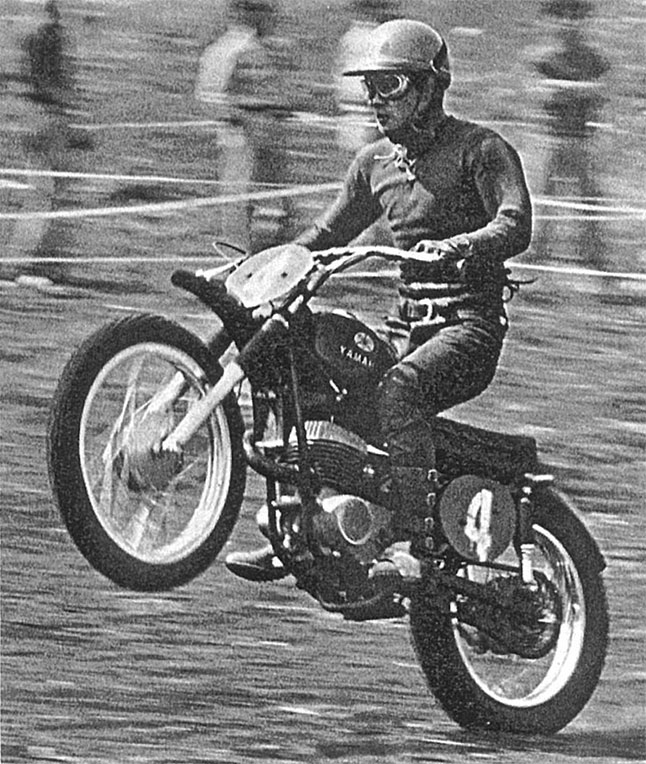 Tadao Suzuki on the YX26
Tadao Suzuki on the YX26Before the YX26 was developed, the engines on Yamaha’s road race machines used rotary disc valve induction. But the width of these engines wasn’t considered suitable for a 250cc single-cylinder motocrosser, so instead, piston reed valve induction was chosen for the engine on the YX26. The DT-1’s engine was a redesign based on the YX26’s to make it suitable for a mass-production model. To ensure reliability, the size of the crankshaft was increased compared to the one on the YX26. Also, the DT-1 had the same dimensions for the three axes as those on the existing 125cc YA-6 model and extensive measures were taken to reduce weight and make the bike more compact. The bore x stroke was the same 70 mm × 64 mm as on the YX26. With the scavenge port as well, the scavenge passage and auxiliary scavenge passage were separate in a new design that reflected technological feedback directly from the YX26.
To make the chassis slimmer overall, the engineers and the designers came up with numerous and elaborate ideas to share with each other. The most difficult hurdles came in the area of weight reduction, with each section being given quotas to reach the overall weight target. Every part was re-designed to reduce weight with complete disregard for conventional standards.
For the frame, high-tensile steel pipe was used. On the initial prototypes, chassis parts had been thinned for weight reduction and there were some cases of breakage, but after repeated tests, a robust chassis strong enough for a production model was finally developed.
Also, the wide 4.00-18 size rear tire—one of the distinctive trademarks of the DT-1—was chosen on the basis of a number of detailed requests from the people at YIC in the U.S. However, at the time, a 4-inch wide tire was nearly the same size as the tire for a 4-wheeled truck. There was no way to find an existing motorcycle tire that wide in Japan, so Yamaha worked with a Japanese tire manufacturer to develop a specially designed super-wide tire with a universal tread pattern.
Then, just before the model was ready to go into production, a final prototype was taken to an American motocross course for testing. After testing it against models from other manufacturers, the test riders came back with the highest of praise, saying that simply removing the equipment required for it to be street-legal would give the DT-1 performance equal to that of a full-on motocrosser.
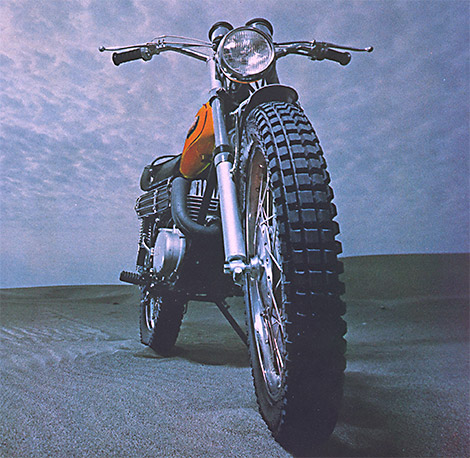
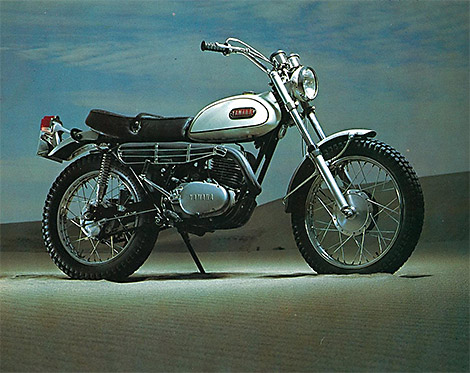

That was how the DT-1 was born. In the winter of 1967, just prior to the model’s planned release, a management meeting was held in the U.S. to consider how many units should be scheduled for the first sales quota. At the time, the total number of all Yamaha models sold annually in the U.S. was about 4,000 units. But after deliberations were over, the members of the meeting had decided to set a first-year sales target three times that much: 12,000 units. It seemed like an ambitious plan at first, but the DT-1 became such a huge hit that it flew out of the stores as fast as Yamaha could stock them, and the sales target was quickly met.
The following year, an article in Yamaha Motor’s overseas newsletter for dealers, Yamaha News, read:
“A Yamaha Trail 250 DT-1 is the most striking bike catching eyes on the street, and it is always ready to stir up a storm on any wild land. Ride it into the wilds straight from pavements to enjoy the fun of off-road riding at its best. It will prove a rare dual-purpose bike any time, going across streams, passing through woods, speeding along beaches and meeting any other requirements of off-road riding. A Yamaha Trail 250 DT-1 is a real man’s bike. It has developed a new field of motorcycling fun and utility to enchant youth around the world.”
Tom White, founder of White Brothers Cycle Specialties and member of the AMA Motorcycle Hall of Fame, remembers what it was like at the time:
“I first laid my eyes on the Yamaha DT-1 in December of 1967 at the annual Cycle World Show held in Anaheim. It was the star of the show. Nobody here had ever seen anything like it. I went to my dealer the next day and placed my order and the bike finally came in in April the next year. Everybody was lining up to get this bike. It was a perfect combination for riding both on the street and off-road, and it had a very, very unique look and a very unique sound. You could also outfit it with a Genuine Yamaha Tuning kit to increase the horsepower. It was a motorcycle that really changed the market here in America.”
The DT-1 had been developed as an export market model, and there were no big initial expectations for it in the Japanese market. But when it was displayed at the Tokyo Motor Show in the fall of 1967, it was a showstopper and seen as the pioneer of a whole new category. To accompany its launch on the Japanese domestic market, Yamaha worked in cooperation with motorcycle dealerships across the country to hold Yamaha Trail Courses, hands-on riding events to get as many people as possible to experience the fun of riding off-road. Yamaha also developed and marketed the aftermarket Genuine Yamaha Tuning kit that helped many riders compete on a higher level and inspire an even larger circle of DT-1 fans.
It was just five months after the DT-1 was released in Japan that models fitted with the Genuine Yamaha Tuning kit made their debut in the pinnacle of Japanese motocross competition, the All Japan Motocross Championship. The race was held in Teine, Hokkaido in 1968. A year before, Tadao “Chu-san” Suzuki had won All Japan Motocross Grand Prix riding the YX26, and this time he was on the DT-1. In front of a gallery of 20,000 fans, he flew around the course on the DT-1 to an overwhelming victory in the premier 250cc class. This second consecutive victory in the top category of motocross in Japan proved the potential of the DT-1.
 Tadao Suzuki rides to a debut win on the DT-1
Tadao Suzuki rides to a debut win on the DT-1After this, Yamaha carried on the DT-1’s reputation of “a model that anyone can easily enjoy motorsports with” to the 360cc RT-1, 125cc AT-1, 90cc HT-1 and the 50cc and 80cc “mini-trail” model series, establishing the brand-specific “Yamaha Trail” category in the process. With this, Yamaha had clearly established itself as a leader in the off-road motorcycle category. The other manufacturers soon followed suit by introducing their own trail models one after another, and the number of off-road riding fans skyrocketed worldwide.
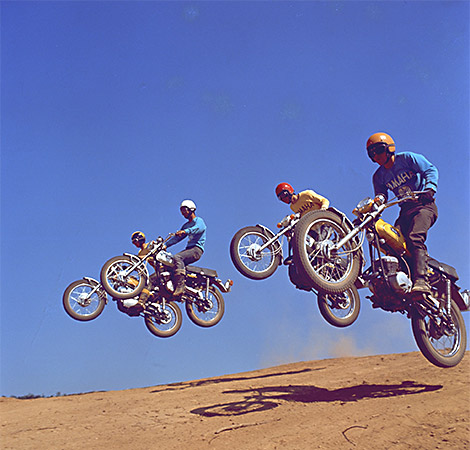
The development and marketing of the DT-1 would spark a profound appreciation—especially within Yamaha—of the fun and the depth of off-road riding and its power to bring great joy to people. In this sense, the DT-1 turned Yamaha itself into a pure-blooded off-road enthusiast and sowed the seeds of a Yamaha tradition of pioneering new product fields.

Tom White and the Yamaha DT-1
Tom White, founder of White Brothers Cycle Specialties, talks about his first encounter with the DT-1 and what it did for the motorcycle industry.
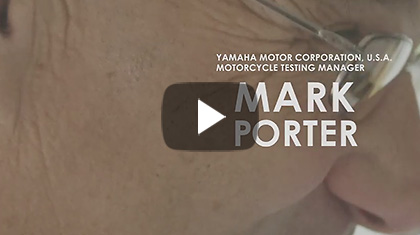
Mark Porter Looks Back on the Yamaha DT-1
Mark Porter, the division manager of testing at Yamaha Motor Corporation, U.S.A. (YMUS), looks back on what the DT-1 was like.
